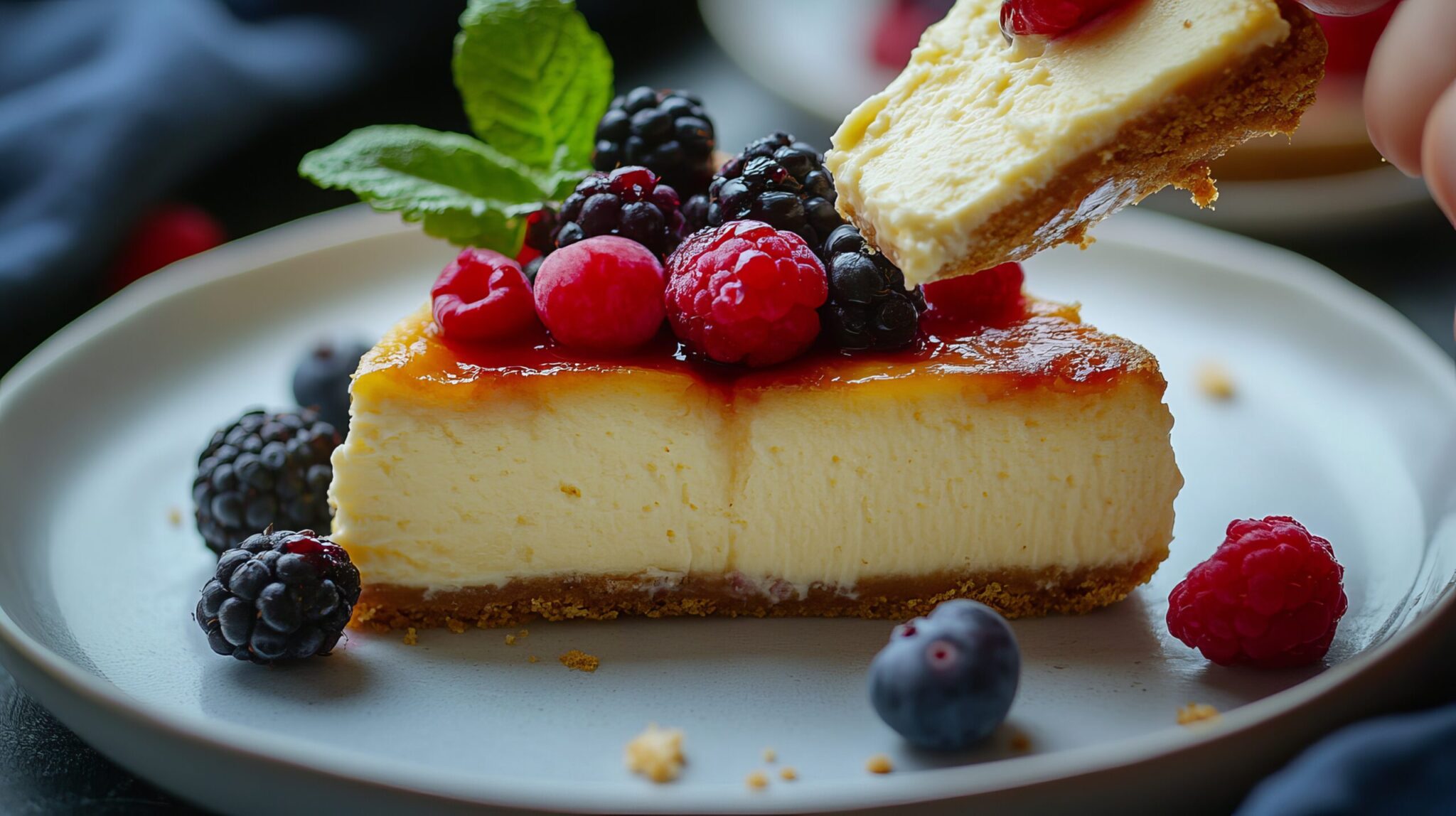Introduction to San Sebastian Cheesecake
The San Sebastian Cheesecake, also known as the Basque Burnt Cheesecake, has captivated food enthusiasts worldwide. It originated in the Basque Country in Spain and quickly gained popularity due to its creamy and crustless nature. The cheesecake stands out with its caramelized top and rich flavor. If you want to learn more about the history of San Sebastian Cheesecake, this guide explains why it has become such a global sensation.
Understanding This Unique Cheesecake
This cheesecake features a unique texture and flavor profile. Unlike traditional cheesecakes, it has a burnt top that adds a slight bitterness, perfectly balancing with its creamy interior. Typically, bakers prepare the cheesecake at a high temperature, giving it a golden, almost burnt exterior while keeping the inside luscious and smooth. To perfect this recipe, you can refer to this detailed guide.
Essential Ingredients for San Sebastian Cheesecake
To make a San Sebastian Cheesecake, you will need several key ingredients:
- Cream Cheese – This is the base of the cheesecake, providing richness and creaminess.
- Heavy Cream – It adds a smooth texture and enhances the creaminess.
- Sugar – It sweetens the cheesecake and helps achieve the caramelized top.
- Eggs – These are essential for binding the ingredients and giving the cheesecake structure.
- Flour – A small amount helps stabilize the cheesecake.
- Vanilla Extract – It adds a hint of flavor to complement the creaminess.
Step-by-Step Recipe for San Sebastian Cheesecake
Now, let’s dive into the step-by-step process of making this delicious cheesecake:
- First, preheat your oven to 240°C (464°F). Line a springform pan with parchment paper, ensuring the paper extends above the top of the pan.
- Next, in a large mixing bowl, beat the cream cheese and sugar until smooth and creamy.
- After that, add the eggs one at a time, beating well after each addition. Then, mix in the vanilla extract.
- Gradually add the heavy cream, mixing until fully incorporated. Sift in the flour and fold it into the mixture until smooth.
- Once your batter is ready, pour it into the prepared pan and bake for 50-60 minutes, or until the top is deeply caramelized and the center is still slightly jiggly.
- Finally, allow the cheesecake to cool completely before removing it from the pan. You can serve it at room temperature or chilled.
Pro Tips for Perfecting Your Cheesecake
To ensure your San Sebastian Cheesecake turns out perfectly, keep these tips in mind:
- Always use high-quality cream cheese to achieve the best flavor and texture.
- Remember to bake at a high temperature to get the characteristic burnt top.
- Don’t overbake; the center should remain slightly jiggly to ensure a creamy interior.
- Finally, allow the cheesecake to cool gradually to prevent cracking.
Creative Twists on the Classic Recipe
Although the classic Basque Burnt Cheesecake is beloved for its simplicity, several variations are worth trying:
- Chocolate San Sebastian Cheesecake – Add melted chocolate to the batter for a rich, chocolatey twist.
- Matcha San Sebastian Cheesecake – Incorporate matcha powder into the batter for a unique flavor and vibrant color.
- Lemon San Sebastian Cheesecake – Add lemon zest and juice for a refreshing citrus flavor.
If you’re looking for additional tips to enhance your cheesecake-making skills, this expert guide is a must-read.
How to Serve San Sebastian Cheesecake
After your cheesecake has cooled, it’s time to think about serving. This cheesecake is best served at room temperature or slightly chilled. It pairs beautifully with fresh berries, a drizzle of honey, or a dusting of powdered sugar. For an indulgent treat, consider serving it with a side of vanilla ice cream or a glass of dessert wine. You might also enjoy it alongside a comforting dish like Velveeta Mac and Cheese, which complements the rich flavors of the cheesecake.
Frequently Asked Questions About This Cheesecake
Let’s address some common questions about this cheesecake:
What makes this cheesecake different?
This cheesecake stands out because of its burnt top and creamy, custard-like interior, offering a perfect balance of bitterness and sweetness.
Can I make this cheesecake without an oven?
While using an oven is ideal for achieving the characteristic burnt top, you can try using a convection microwave with a grill function. However, the results may vary.
How do I store this cheesecake?
You should store the cheesecake in the refrigerator, covered, for up to 3 days. Additionally, it can be frozen for up to a month.
Is this cheesecake gluten-free?
Yes, you can make it gluten-free by substituting the flour with a gluten-free alternative or omitting it entirely. For more gluten-free options, you might want to explore this Gluten-Free Mac and Cheese Recipe.
Can I freeze this cheesecake?
Yes, you can freeze this cheesecake. Just wrap it tightly in plastic wrap and aluminum foil before freezing.
Conclusion
This Basque dessert is delightful, combining simplicity with a unique flavor profile. Whether you’re a cheesecake enthusiast or trying it for the first time, this recipe is sure to impress. Don’t forget to experiment with variations and serving suggestions to make it your own. Finally, consider pairing it with other comforting dishes like Ultimate Mac and Cheese Meatloaf Casserole for a complete meal experience!

3 thoughts on “San Sebastian Cheesecake: Ultimate Guide to Perfection”